Premium Only Content
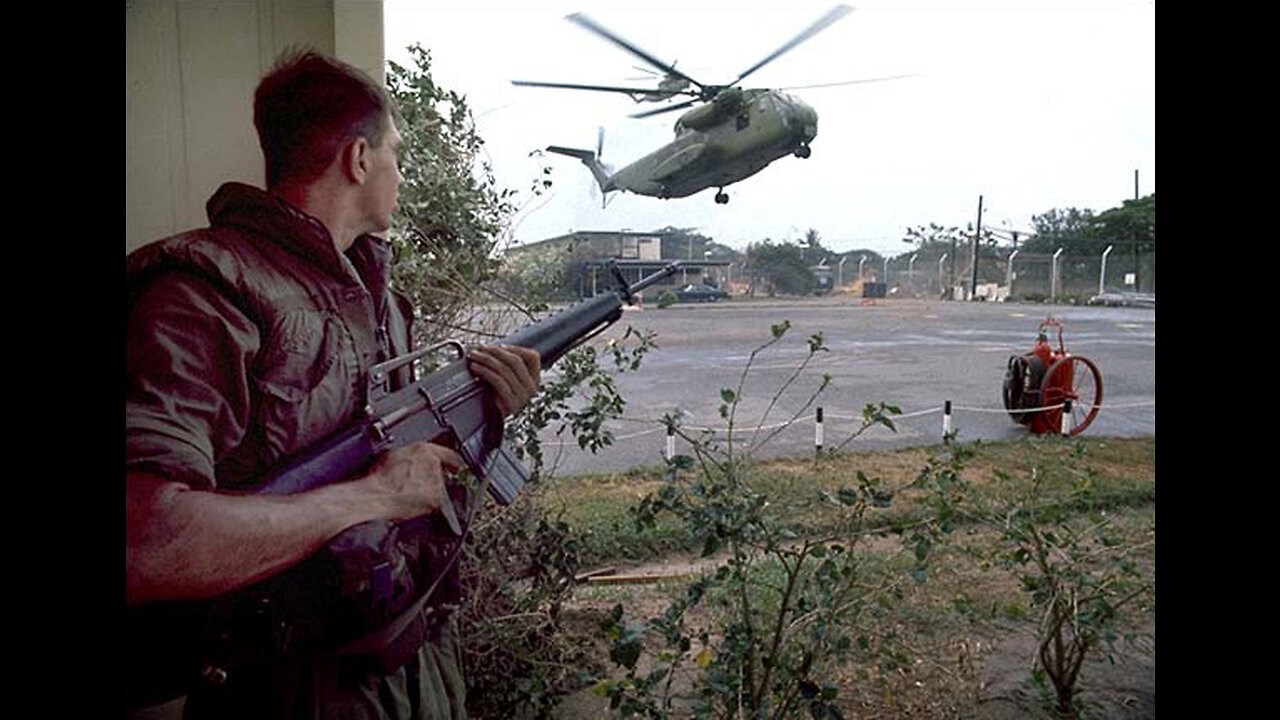
The Incredible Story of the CIA, Lies, Corruption & the End of the Vietnam War (1985)
Read more about these CIA secrets: https://thememoryhole.substack.com/p/secrets-from-the-cias-last-days-in
A gripping and fascinating interview, due to the revelations made by CIA officer John Stockwell regarding corruption, inefficiency, duplicity, immorality, and stupidity of high U.S. officials.
One of the most significant revelations made by Stockwell is the incredible corruption of the South Vietnamese army, which rendered it an impotent fighting force. However, he notes that lower echelon CIA officials were expressly forbidden from reporting these facts by higher bureaucrats. This suggests that there was a deliberate effort to conceal the truth about the effectiveness of the South Vietnamese army, possibly to avoid a loss of confidence in the war effort.
Another shocking revelation made by Stockwell is the identity of a high-level American official who continuously gave sensitive, secret information to the North Vietnamese. This information was apparently used by the North Vietnamese with devastating results, likely resulting in the loss of American lives and resources.
Stockwell also relates his efforts to evacuate his Vietnamese personnel and the continuous means used by his superiors to block such an operation. This suggests that there was a lack of concern for the safety and well-being of Vietnamese individuals who had worked with the CIA, possibly due to a desire to maintain secrecy and avoid political backlash.
The Vietnam War (also known by other names) was a conflict in Vietnam, Laos, and Cambodia from 1 November 1955[A 2] to the fall of Saigon on 30 April 1975.[17] It was the second of the Indochina Wars and was officially fought between North Vietnam and South Vietnam. The north was supported by the Soviet Union, China,[21] and other communist states, while the south was supported by the United States and other anti-communist allies.[68][69] The war is widely considered to be a Cold War-era proxy war.[70] It lasted almost 20 years, with direct U.S. involvement ending in 1973. The conflict also spilled over into neighboring states, exacerbating the Laotian Civil War and the Cambodian Civil War, which ended with all three countries becoming communist states by 1975.
After the French military withdrawal from Indochina in 1954 – following their defeat in the First Indochina War – the Viet Minh took control of North Vietnam, and the U.S. assumed financial and military support for the South Vietnamese state.[71][A 9] The Viet Cong (VC), a South Vietnamese common front under the direction of the north, initiated a guerrilla war in the south. The People's Army of Vietnam (PAVN), also known as the North Vietnamese Army (NVA), engaged in more conventional warfare with U.S. and South Vietnamese forces (ARVN). North Vietnam invaded Laos in 1958, establishing the Ho Chi Minh Trail to supply and reinforce the VC.[72]: 16 By 1963, the north had sent 40,000 soldiers to fight in the south.[72]: 16 U.S. involvement increased under President John F. Kennedy, from just under a thousand military advisors in 1959 to 23,000 by 1964.[73][41]: 131
Following the Gulf of Tonkin incident in August 1964, the U.S. Congress passed a resolution that gave President Lyndon B. Johnson broad authority to increase U.S. military presence in Vietnam, without a formal declaration of war. Johnson ordered the deployment of combat units for the first time, and dramatically increased the number of American troops to 184,000.[73] U.S. and South Vietnamese forces relied on air superiority and overwhelming firepower to conduct search and destroy operations, involving ground forces, artillery, and airstrikes. The U.S. also conducted a large-scale strategic bombing campaign against North Vietnam,[41]: 371–374 [74] and continued significantly building up its forces, despite little progress being made. In 1968, North Vietnamese forces launched the Tet Offensive; though it was a military defeat for them, it became a political victory, as it caused U.S. domestic support for the war to fade.[41]: 481 By the end of the year, the VC held little territory and were sidelined by the PAVN.[75] In 1969, North Vietnam declared the Provisional Revolutionary Government of the Republic of South Vietnam. Operations crossed national borders, and the U.S. bombed North Vietnamese supply routes in Laos and Cambodia. The 1970 deposing of the Cambodian monarch, Norodom Sihanouk, resulted in a PAVN invasion of the country (at the request of the Khmer Rouge), and then a U.S.-ARVN counter-invasion, escalating the Cambodian Civil War. After the election of Richard Nixon in 1969, a policy of "Vietnamization" began, which saw the conflict fought by an expanded ARVN, while U.S. forces withdrew in the face of increasing domestic opposition. U.S. ground forces had largely withdrawn by early 1972, and their operations were limited to air support, artillery support, advisors, and materiel shipments. The Paris Peace Accords of January 1973 saw all U.S. forces withdrawn;[76]: 457 accords were broken almost immediately, and fighting continued for two more years. Phnom Penh fell to the Khmer Rouge on 17 April 1975, while the 1975 spring offensive saw the Fall of Saigon to the PAVN on 30 April, marking the end of the war; North and South Vietnam were reunified the following year.
The war exacted an enormous human cost: estimates of the number of Vietnamese soldiers and civilians killed range from 966,000[34] to 3 million.[64] Some 275,000–310,000 Cambodians,[65][66][67] 20,000–62,000 Laotians,[64] and 58,220 U.S. service members also died in the conflict.[A 8] The end of the Vietnam War would precipitate the Vietnamese boat people and the larger Indochina refugee crisis, which saw millions of refugees leave Indochina, an estimated 250,000 of whom perished at sea. Once in power, the Khmer Rouge carried out the Cambodian genocide, while conflict between them and the unified Vietnam would eventually escalate into the Cambodian–Vietnamese War, which toppled the Khmer Rouge government in 1979. In response, China invaded Vietnam, with subsequent border conflicts lasting until 1991. Within the United States, the war gave rise to what was referred to as Vietnam Syndrome, a public aversion to American overseas military involvements,[77] which, together with the Watergate scandal contributed to the crisis of confidence that affected America throughout the 1970s.[78]
Names
Further information: Terminology of the Vietnam War
Various names have been applied to the conflict. "Vietnam War" is the most commonly used name in English. It has also been called the "Second Indochina War"[79] and the "Vietnam conflict".[80][81][82]
Given that there have been several conflicts in Indochina, this particular conflict is known by its primary protagonists' names to distinguish it from others. In Vietnam, the war is generally known as the "Resistance war against the United States" (Kháng chiến chống Mỹ).[83] It is also sometimes called the "American War".[84]
Background
Main articles: First Indochina War, 1940–1946 in French Indochina, and 1947–1950 in French Indochina
Further information: French Indochina in World War II and War in Vietnam (1945–1946)
See also: History of Vietnam, Tây Sơn wars, Cochinchina Campaign, Cần Vương, Việt Nam Quốc Dân Đảng, Yên Bái mutiny, and Operation Vulture
The primary military organizations involved in the war were the United States Armed Forces and the Army of the Republic of Vietnam, pitted against the People's Army of Vietnam (PAVN) (commonly called the North Vietnamese Army, or NVA, in English-language sources) and the National Front for the Liberation of South Vietnam (NLF, more commonly known as the Viet Cong (VC) in English language sources), a South Vietnamese communist guerrilla force.[24]: xli
Indochina had been a French colony from the late 19th century to the mid-20th century. When the Japanese invaded during World War II, the Viet Minh, a Communist-led common front under the leadership of Ho Chi Minh, opposed them with support from the US, the Soviet Union and China. They received some Japanese arms when Japan surrendered. On V-J Day, 2 September, Ho Chi Minh proclaimed in Hanoi the establishment of the Democratic Republic of Vietnam (DRV). The DRV ruled as the only civil government in all of Vietnam for 20 days, after the abdication of Emperor Bảo Đại, who had governed under the Japanese rule. On 23 September 1945, French forces overthrew the local DRV government, and declared French authority restored.[85] The French gradually retook control of Indochina. Following unsuccessful negotiations, the Viet Minh initiated an insurgency against French rule. Hostilities escalated into the First Indochina War (beginning in December 1946).
Bảo Đại (right) as the "supreme advisor" to the government of the Democratic Republic of Vietnam led by president Hồ Chí Minh (left), 1 June 1946
By the 1950s, the conflict had become entwined with the Cold War. In January 1950, China and the Soviet Union recognized the Viet Minh's Democratic Republic of Vietnam, based in Hanoi, as the legitimate government of Vietnam. The following month the United States and Great Britain recognized the French-backed State of Vietnam in Saigon, led by former Emperor Bảo Đại, as the legitimate Vietnamese government.[86]: 377–379 [41]: 88 The outbreak of the Korean War in June 1950 convinced many Washington policymakers that the war in Indochina was an example of communist expansionism directed by the Soviet Union.[41]: 33–35
Military advisors from China began assisting the Viet Minh in July 1950.[72]: 14 PRC weapons, expertise, and laborers transformed the Viet Minh from a guerrilla force into a regular army.[41]: 26 [87] In September 1950, the United States created a Military Assistance and Advisory Group (MAAG) to screen French requests for aid, advise on strategy, and train Vietnamese soldiers.[88]: 18 By 1954, the United States had spent $1 billion in support of the French military effort, shouldering 80 percent of the cost of the war.[41]: 35
During the Battle of Dien Bien Phu (1954), U.S. carriers sailed to the Gulf of Tonkin and the U.S. conducted reconnaissance flights. France and the United States also discussed the use of three tactical nuclear weapons, although reports of how seriously this was considered and by whom are vague and contradictory.[89][41]: 75 According to then-Vice President Richard Nixon, the Joint Chiefs of Staff drew up plans to use small tactical nuclear weapons to support the French.[89] Nixon, a so-called "hawk" on Vietnam, suggested that the United States might have to "put American boys in".[24]: 76 President Dwight D. Eisenhower made American participation contingent on British support, but the British were opposed.[24]: 76 Eisenhower, wary of involving the United States in a land war in Asia, decided against military intervention.[41]: 75–76 Throughout the conflict, U.S. intelligence estimates remained skeptical of France's chance of success.[90]
On 7 May 1954, the French garrison at Dien Bien Phu surrendered. The defeat marked the end of French military involvement in Indochina. At the Geneva Conference, the French negotiated a ceasefire agreement with the Viet Minh, and independence was granted to Cambodia, Laos, and Vietnam.[91][citation needed]
Transition period
Main articles: Geneva Conference (1954); Operation Passage to Freedom; Battle of Saigon (1955); Ba Cụt; State of Vietnam referendum, 1955; Land reform in Vietnam; Land reform in North Vietnam; and 1954 in Vietnam
The Geneva Conference, 1954
At the 1954 Geneva Conference, Vietnam was temporarily partitioned at the 17th parallel. Ho Chi Minh had wished to continue the war in the south, but was restrained by his Chinese allies who convinced him that he could win control by electoral means.[92][41]: 87–88 Under the terms of the Geneva Accords, civilians were allowed to move freely between the two provisional states for a 300-day period. Elections throughout the country were to be held in 1956 to establish a unified government.[41]: 88–90 Around one million northerners, mainly minority Catholics, fled south, fearing persecution by the Communists.[41]: 96 [93] This followed an American psychological warfare campaign, designed by Edward Lansdale for the Central Intelligence Agency (CIA), which exaggerated anti-Catholic sentiment among the Viet Minh and which falsely claimed the US was about to drop atomic bombs on Hanoi.[94][95][41]: 96–97 The exodus was coordinated by a U.S.-funded $93 million relocation program, which included the use of the Seventh Fleet to ferry refugees.[96] The northern, mainly Catholic refugees gave the later Ngô Đình Diệm regime a strong anti-communist constituency.[97]: 238 Diệm staffed his government's key posts mostly with northern and central Catholics.
Anti-Bảo Đại, pro-French representatives of the State of Vietnam national assembly, Saigon, 1955
In addition to the Catholics flowing south, over 130,000 "Revolutionary Regroupees" went to the north for "regroupment", expecting to return to the south within two years.[76]: 98 The Viet Minh left roughly 5,000 to 10,000 cadres in the south as a base for future insurgency.[41]: 104 The last French soldiers left South Vietnam in April 1956.[41]: 116 The PRC completed its withdrawal from North Vietnam at around the same time.[72]: 14
Between 1953 and 1956, the North Vietnamese government instituted various agrarian reforms, including "rent reduction" and "land reform", which resulted in significant political oppression. During the land reform, testimony from North Vietnamese witnesses suggested a ratio of one execution for every 160 village residents, which extrapolated resulted in an initial estimation of nearly 100,000 executions nationwide. Because the campaign was concentrated mainly in the Red River Delta area, a lower estimate of 50,000 executions became widely accepted by scholars at the time.[98]: 143 [99][100]: 569 [101] However, declassified documents from the Vietnamese and Hungarian archives indicate that the number of executions was much lower than reported at the time, although likely greater than 13,500.[102] In 1956, leaders in Hanoi admitted to "excesses" in implementing this program and restored a large amount of the land to the original owners.[41]: 99–100
The south, meanwhile, constituted the State of Vietnam, with Bảo Đại as Emperor and Ngô Đình Diệm (appointed in July 1954) as his prime minister. Neither the United States government nor Ngô Đình Diệm's State of Vietnam signed anything at the 1954 Geneva Conference. With respect to the question of reunification, the non-communist Vietnamese delegation objected strenuously to any division of Vietnam, but lost out when the French accepted the proposal of Viet Minh delegate Phạm Văn Đồng,[103]: 134 who proposed that Vietnam eventually be united by elections under the supervision of "local commissions".[103]: 119 The United States countered with what became known as the "American Plan", with the support of South Vietnam and the United Kingdom.[103]: 140 It provided for unification elections under the supervision of the United Nations, but was rejected by the Soviet delegation.[103]: 140 The United States said, "With respect to the statement made by the representative of the State of Vietnam, the United States reiterates its traditional position that peoples are entitled to determine their own future and that it will not join in any arrangement which would hinder this".[103]: 570–571 U.S. President Dwight D. Eisenhower wrote in 1954:
I have never talked or corresponded with a person knowledgeable in Indochinese affairs who did not agree that had elections been held as of the time of the fighting, possibly eighty percent of the population would have voted for the Communist Ho Chi Minh as their leader rather than Chief of State Bảo Đại. Indeed, the lack of leadership and drive on the part of Bảo Đại was a factor in the feeling prevalent among Vietnamese that they had nothing to fight for.[104]
In 1957, independent observers from India, Poland, and Canada representing the International Control Commission (ICC) stated that fair, unbiased elections were not possible, with the ICC reporting that neither South nor North Vietnam had honored the armistice agreement.[105]
Ba Cut in Can Tho Military Court 1956, commander of religious movement the Hòa Hảo, which had fought against the Việt Minh, Vietnamese National Army and Cao Dai movement throughout the first war
From April to June 1955, Diệm eliminated any political opposition in the south by launching military operations against two religious groups: the Cao Đài and Hòa Hảo of Ba Cụt. The campaign also focused on the Bình Xuyên organized crime group, which was allied with members of the communist party secret police and had some military elements. The group was ultimately defeated in April following a battle in Saigon. As broad-based opposition to his harsh tactics mounted, Diệm increasingly sought to blame the communists.[24]
In a referendum on the future of the State of Vietnam on 23 October 1955, Diệm rigged the poll supervised by his brother Ngô Đình Nhu and was credited with 98.2 percent of the vote, including 133% in Saigon. His American advisors had recommended a more "modest" winning margin of "60 to 70 percent." Diệm, however, viewed the election as a test of authority.[97]: 224 Three days later, he declared South Vietnam to be an independent state under the name Republic of Vietnam (ROV), with himself as president.[41] Likewise, Ho Chi Minh and other communist officials always won at least 99% of the vote in North Vietnamese "elections".[98]: 193–194, 202–203, 215–217
The domino theory, which argued that if one country fell to communism, then all of the surrounding countries would follow, was first proposed as policy by the Eisenhower administration.[86]: 19 John F. Kennedy, then a U.S. senator, said in a speech to the American Friends of Vietnam: "Burma, Thailand, India, Japan, the Philippines and obviously Laos and Cambodia are among those whose security would be threatened if the Red Tide of Communism overflowed into Vietnam."[106]
Diệm era, 1954–1963
Main articles: Ngô Đình Diệm and War in Vietnam (1954–1959)
Rule
Map of insurgency and "disturbances", 1957 to 1960
A devout Roman Catholic, Diệm was fervently anti-communist, nationalist, and socially conservative. Historian Luu Doan Huynh notes that "Diệm represented narrow and extremist nationalism coupled with autocracy and nepotism."[86]: 200–201 Most Vietnamese people were Buddhist, and they were alarmed by Diệm's actions, like his dedication of the country to the Virgin Mary.
Beginning in the summer of 1955, Diệm launched the "Denounce the Communists" campaign, during which suspected communists and other anti-government elements were arrested, imprisoned, tortured, or executed. He instituted the death penalty against any activity deemed communist in August 1956.[16] The North Vietnamese government claimed that, by November 1957, over 65,000 individuals were imprisoned and 2,148 were killed in the process.[107] According to Gabriel Kolko, 40,000 political prisoners had been jailed by the end of 1958.[76]: 89
U.S. President Dwight D. Eisenhower and Secretary of State John Foster Dulles greet President Ngô Đình Diệm of South Vietnam in Washington, 8 May 1957
In October 1956, Diệm launched a land reform program limiting the size of rice farms per owner. More than 1.8m acres of farm land became available for purchase by landless people. By 1960, the land reform process had stalled because many of Diem's biggest supporters were large land owners.[108]: 14–16
In May 1957, Diệm undertook a ten-day state visit to the United States. President Eisenhower pledged his continued support, and a parade was held in Diệm's honor in New York City. Although Diệm was publicly praised, Secretary of State John Foster Dulles privately conceded that Diệm had to be backed because they could find no better alternative.[97]: 230
Insurgency in the South, 1954–1960
Main articles: Viet Cong and War in Vietnam (1959–1963)
Between 1954 and 1957, the Diệm government succeeded in preventing large-scale organized unrest in the countryside. In April 1957, insurgents launched an assassination campaign, referred to as "extermination of traitors".[109] Seventeen people were killed in an attack at a bar in Châu Đốc in July, and in September a district chief was killed with his family on a highway.[16] By early 1959, however, Diệm had come to regard the (increasingly frequent) violence as an organized campaign and implemented Law 10/59, which made political violence punishable by death and property confiscation.[110] There had been some division among former Viet Minh whose main goal was to hold the elections promised in the Geneva Accords, leading to "wildcat" activities separate from the other communists and anti-GVN activists. Douglas Pike estimated that insurgents carried out 2,000 abductions, and 1,700 assassinations of government officials, village chiefs, hospital workers and teachers from 1957 to 1960.[41]: 106 [16] Violence between the insurgents and government forces increased drastically from 180 clashes in January 1960 to 545 clashes in September.[111]
In September 1960, COSVN, North Vietnam's southern headquarters, gave an order for a full scale coordinated uprising in South Vietnam against the government and 1/3 of the population was soon living in areas of communist control.[41]: 106–107 In December 1960, North Vietnam formally created the Viet Cong with the intent of uniting all anti-GVN insurgents, including non-communists. It was formed in Memot, Cambodia, and directed through COSVN.[72]: 55–58 According to the Pentagon Papers, the Viet Cong "placed heavy emphasis on the withdrawal of American advisors and influence, on land reform and liberalization of the GVN, on coalition government and the neutralization of Vietnam." The identities of the leaders of the organization often were kept secret.[16]
Support for the VC was driven by resentment of Diem's reversal of Viet Minh land reforms in the countryside. The Viet Minh had confiscated large private landholdings, reduced rents and debts, and leased communal lands, mostly to poorer peasants. Diem brought the landlords back to the villages. People who had been farming land for years had to return it to landlords and pay years of back rent. Marilyn B. Young wrote that "The divisions within villages reproduced those that had existed against the French: 75 percent support for the NLF, 20 percent trying to remain neutral and 5 percent firmly pro-government".[112]: 73
North Vietnamese involvement
See also: North Vietnamese invasion of Laos and Ho Chi Minh trail
The Ho Chi Minh trail, known as the Truong Son Road by the North Vietnamese, cuts through Laos. This would develop into a complex logistical system which would allow the North Vietnamese to maintain the war effort despite the largest aerial bombardment campaign in history
In March 1956, southern communist leader Lê Duẩn presented a plan to revive the insurgency entitled "The Road to the South" to the other members of the Politburo in Hanoi; however, as both China and the Soviets opposed confrontation at this time, Lê Duẩn's plan was rejected.[72]: 58 Despite this, the North Vietnamese leadership approved tentative measures to revive the southern insurgency in December 1956.[15] This decision was made at the 11th Plenary Session of the Lao Dong Central Committee. Communist forces were under a single command structure set up in 1958.[113] In May 1958, North Vietnamese forces seized the transportation hub at Tchepone in Southern Laos near the demilitarized zone between North and South Vietnam.[114]: 24
The Ho Chi Minh trail required, on average, four months of rough-terrain travel for combatants from North Vietnam destined for the Southern battlefields.
The North Vietnamese Communist Party approved a "people's war" on the South at a session in January 1959,[41]: 119–120 and, in May, Group 559 was established to maintain and upgrade the Ho Chi Minh trail, at this time a six-month mountain trek through Laos. On 28 July, North Vietnamese and Pathet Lao forces invaded Laos, fighting the Royal Lao Army all along the border. Group 559 was headquartered in Na Kai, Houaphan province in northeast Laos close to the border.[115]: 26 About 500 of the "regroupees" of 1954 were sent south on the trail during its first year of operation.[116] The first arms delivery via the trail was completed in August 1959.[117] In April 1960, North Vietnam imposed universal military conscription for adult males. About 40,000 communist soldiers infiltrated the south from 1961 to 1963.[72]: 76
Kennedy's escalation, 1961–1963
Main articles: War in Vietnam (1959–1963) and Strategic Hamlet Program
See also: Phạm Ngọc Thảo
President Kennedy's news conference of 23 March 1961
In the 1960 U.S. presidential election, Senator John F. Kennedy defeated incumbent Vice President Richard M. Nixon. Although Eisenhower warned Kennedy about Laos and Vietnam, Europe and Latin America "loomed larger than Asia on his sights."[97]: 264 In April 1961, Kennedy approved the Bay of Pigs Invasion, which ended in failure. In June 1961, he bitterly disagreed with Soviet premier Nikita Khrushchev when they met in Vienna to discuss key U.S.–Soviet issues. Only 16 months later, the Cuban Missile Crisis (16–28 October 1962) played out on television worldwide. It was the closest the Cold War came to escalating into a full-scale nuclear war, and the U.S. raised the readiness level of Strategic Air Command (SAC) forces to DEFCON 2.
The Kennedy administration remained essentially committed to the Cold War foreign policy inherited from the Truman and Eisenhower administrations. In 1961, the U.S. had 50,000 troops based in South Korea, and Kennedy faced four crisis situations: the failure of the Bay of Pigs Invasion that he had approved on 4 April,[118] settlement negotiations between the pro-Western government of Laos and the Pathet Lao communist movement in May ("Kennedy sidestepped Laos, whose rugged terrain was no battleground for American soldiers."[97]: 265 ), the construction of the Berlin Wall in August, and the Cuban Missile Crisis in October. Kennedy believed that yet another failure to gain control and stop communist expansion would irreparably damage U.S. credibility. He was determined to "draw a line in the sand" and prevent a communist victory in Vietnam. He told James Reston of The New York Times immediately after his Vienna summit meeting with Khrushchev, "Now we have a problem making our power credible and Vietnam looks like the place."[119][120]
South Vietnam, Military Regions, 1967
Kennedy's policy toward South Vietnam assumed that Diệm and his forces had to ultimately defeat the guerrillas on their own. He was against the deployment of American combat troops and observed that "to introduce U.S. forces in large numbers there today, while it might have an initially favorable military impact, would almost certainly lead to adverse political and, in the long run, adverse military consequences."[121] The quality of the South Vietnamese military, however, remained poor. Poor leadership, corruption, and political promotions all played a part in weakening the ARVN. The frequency of guerrilla attacks rose as the insurgency gathered steam. While Hanoi's support for the Viet Cong played a role, South Vietnamese governmental incompetence was at the core of the crisis.[86]: 369
One major issue Kennedy raised was whether the Soviet space and missile programs had surpassed those of the United States. Although Kennedy stressed long-range missile parity with the Soviets, he was also interested in using special forces for counterinsurgency warfare in Third World countries threatened by communist insurgencies. Although they were originally intended for use behind front lines after a conventional Soviet invasion of Europe, Kennedy believed that the guerrilla tactics employed by special forces such as the Green Berets would be effective in a "brush fire" war in Vietnam.
President Kennedy meeting with Secretary of Defense McNamara, circa 19 June 1962
Kennedy advisors Maxwell Taylor and Walt Rostow recommended that U.S. troops be sent to South Vietnam disguised as flood relief workers.[122] Kennedy rejected the idea but increased military assistance yet again. In April 1962, John Kenneth Galbraith warned Kennedy of the "danger we shall replace the French as a colonial force in the area and bleed as the French did."[123] Eisenhower's put 900 advisors in Vietnam, and by November 1963, Kennedy had put 16,000 American military personnel in Vietnam.[41]: 131
The Strategic Hamlet Program was initiated in late 1961. This joint U.S.–South Vietnamese program attempted to resettle the rural population into fortified villages. It was implemented in early 1962 and involved some forced relocation and segregation of rural South Vietnamese into new communities where the peasantry would be isolated from the Viet Cong. It was hoped these new communities would provide security for the peasants and strengthen the tie between them and the central government. However, by November 1963 the program had waned, and it officially ended in 1964.[24]: 1070
On 23 July 1962, fourteen nations, including China, South Vietnam, the Soviet Union, North Vietnam and the United States, signed an agreement promising to respect the neutrality of Laos.
Ousting and assassination of Ngô Đình Diệm
Main articles: Cable 243, Arrest and assassination of Ngô Đình Diệm, Buddhist crisis, Krulak Mendenhall mission, McNamara Taylor mission, 1963 South Vietnamese coup, and Reaction to the 1963 South Vietnamese coup
See also: Role of the United States in the Vietnam War § John F. Kennedy (1961–1963), 1960 South Vietnamese coup attempt, 1962 South Vietnamese Independence Palace bombing, Huế Phật Đản shootings, and Xá Lợi Pagoda raids
The inept performance of the ARVN was exemplified by failed actions such as the Battle of Ấp Bắc on 2 January 1963, in which a small band of Viet Cong won a battle against a much larger and better-equipped South Vietnamese force, many of whose officers seemed reluctant even to engage in combat.[124]: 201–206 During the battle the South Vietnamese had lost 83 soldiers and 5 US war helicopters serving to ferry ARVN troops that had been shot down by Vietcong forces, while the Vietcong forces had lost only 18 soldiers. The ARVN forces were led by Diệm's most trusted general, Huỳnh Văn Cao, commander of the IV Corps. Cao was a Catholic who had been promoted due to religion and fidelity rather than skill, and his main job was to preserve his forces to stave off coup attempts; he had earlier vomited during a communist attack. Some policymakers in Washington began to conclude that Diệm was incapable of defeating the communists and might even make a deal with Ho Chi Minh. He seemed concerned only with fending off coups and had become more paranoid after attempts in 1960 and 1962, which he partly attributed to U.S. encouragement. As Robert F. Kennedy noted, "Diệm wouldn't make even the slightest concessions. He was difficult to reason with ..."[125] Historian James Gibson summed up the situation:
Strategic hamlets had failed ... The South Vietnamese regime was incapable of winning the peasantry because of its class base among landlords. Indeed, there was no longer a 'regime' in the sense of a relatively stable political alliance and functioning bureaucracy. Instead, civil government and military operations had virtually ceased. The National Liberation Front had made great progress and was close to declaring provisional revolutionary governments in large areas.[126]
Discontent with Diệm's policies exploded in May 1963 following the Huế Phật Đản shootings of nine unarmed Buddhists protesting against the ban on displaying the Buddhist flag on Vesak, the Buddha's birthday. This resulted in mass protests against discriminatory policies that gave privileges to the Catholic Church and its adherents over the Buddhist majority. Diệm's elder brother Ngô Đình Thục was the Archbishop of Huế and aggressively blurred the separation between church and state. Thuc's anniversary celebrations occurred shortly before Vesak had been bankrolled by the government, and Vatican flags were displayed prominently. There had also been reports of Catholic paramilitaries demolishing Buddhist pagodas throughout Diệm's rule. Diệm refused to make concessions to the Buddhist majority or take responsibility for the deaths. On 21 August 1963, the ARVN Special Forces of Colonel Lê Quang Tung, loyal to Diệm's younger brother Ngô Đình Nhu, raided pagodas across Vietnam, causing widespread damage and destruction and leaving a death toll estimated to range into the hundreds.
ARVN forces capture a Viet Cong
U.S. officials began discussing the possibility of a regime change during the middle of 1963. The United States Department of State wanted to encourage a coup, while the Defense Department favored Diệm. Chief among the proposed changes was the removal of Diệm's younger brother Nhu, who controlled the secret police and special forces, and was seen as the man behind the Buddhist repression and more generally the architect of the Ngô family's rule. This proposal was conveyed to the U.S. embassy in Saigon in Cable 243.
Ngô Đình Diệm after being shot and killed in a coup on 2 November 1963
The CIA contacted generals planning to remove Diệm and told them that the United States would not oppose such a move nor punish the generals by cutting off aid. President Diệm was overthrown and executed, along with his brother, on 2 November 1963. When Kennedy was informed, Maxwell Taylor remembered that he "rushed from the room with a look of shock and dismay on his face."[97]: 326 Kennedy had not anticipated Diệm's murder. The U.S. ambassador to South Vietnam, Henry Cabot Lodge, invited the coup leaders to the embassy and congratulated them. Ambassador Lodge informed Kennedy that "the prospects now are for a shorter war".[97]: 327 Kennedy wrote Lodge a letter congratulating him for "a fine job".[127]
Following the coup, chaos ensued. Hanoi took advantage of the situation and increased its support for the guerrillas. South Vietnam entered a period of extreme political instability, as one military government toppled another in quick succession. Increasingly, each new regime was viewed by the communists as a puppet of the Americans; whatever the failings of Diệm, his credentials as a nationalist (as Robert McNamara later reflected) had been impeccable.[86]: 328
U.S. military advisors were embedded at every level of the South Vietnamese armed forces. They were however criticized for ignoring the political nature of the insurgency.[128] The Kennedy administration sought to refocus U.S. efforts on pacification- which in this case was defined as countering the growing threat of insurgency-[129][130] and "winning over the hearts and minds" of the population. The military leadership in Washington, however, was hostile to any role for U.S. advisors other than conventional troop training.[131] General Paul Harkins, the commander of U.S. forces in South Vietnam, confidently predicted victory by Christmas 1963.[88]: 103 The CIA was less optimistic, however, warning that "the Viet Cong by and large retain de facto control of much of the countryside and have steadily increased the overall intensity of the effort".[132]
Paramilitary officers from the CIA's Special Activities Division trained and led Hmong tribesmen in Laos and into Vietnam. The indigenous forces numbered in the tens of thousands and they conducted direct action missions, led by paramilitary officers, against the Communist Pathet Lao forces and their North Vietnamese supporters.[133] The CIA also ran the Phoenix Program and participated in Military Assistance Command, Vietnam – Studies and Observations Group (MAC-V SOG), which was originally named the Special Operations Group, but was changed for cover purposes.[134]
Gulf of Tonkin and Johnson's escalation, 1963–1969
Main article: Joint warfare in South Vietnam, 1963–1969
Further information: United States in the Vietnam War § Americanization
See also: January 1964 South Vietnamese coup, September 1964 South Vietnamese coup attempt, December 1964 South Vietnamese coup, and 1965 South Vietnamese coup
President Kennedy was assassinated on 22 November 1963. Vice President Lyndon B. Johnson had not been heavily involved with policy toward Vietnam;[135][A 10] however, upon becoming president, Johnson immediately focused on the war. On 24 November 1963, he said, "the battle against communism … must be joined … with strength and determination."[137] Johnson knew he had inherited a rapidly deteriorating situation in South Vietnam,[138] but he adhered to the widely accepted domino theory argument for defending the South: Should they retreat or appease, either action would imperil other nations beyond the conflict.[139] Findings from RAND's Viet Cong Motivation and Morale Project bolstered his confidence that an air war would weaken the Viet Cong. Some have argued that the policy of North Vietnam was not to topple other non-communist governments in South East Asia.[86]: 48
The military revolutionary council, meeting in lieu of a strong South Vietnamese leader, was made up of 12 members. This council was headed by General Dương Văn Minh, whom Stanley Karnow, a journalist on the ground, later recalled as "a model of lethargy".[97]: 340 Lodge, frustrated by the end of the year, cabled home about Minh: "Will he be strong enough to get on top of things?" Minh's regime was overthrown in January 1964 by General Nguyễn Khánh.[97]: 341 There was also persistent instability in the military, however, as several coups—not all successful—occurred in a short period of time.
Gulf of Tonkin incident
Main article: Gulf of Tonkin incident
Further information: Credibility gap
On 2 August 1964, USS Maddox, on an intelligence mission along North Vietnam's coast, allegedly fired upon and damaged several torpedo boats that had been stalking it in the Gulf of Tonkin.[76]: 124 A second attack was reported two days later on USS Turner Joy and Maddox in the same area. The circumstances of the attacks were murky.[41]: 218–219 Lyndon Johnson commented to Undersecretary of State George Ball that "those sailors out there may have been shooting at flying fish."[140] An undated NSA publication declassified in 2005 revealed that there was no attack on 4 August.[141]
5:51
Universal Newsreel film about the attack on the U.S. Army base in Pleiku and the U.S. response, February 1965
The second "attack" led to retaliatory airstrikes, and prompted Congress to approve the Gulf of Tonkin Resolution on 7 August 1964.[142]: 78 The resolution granted the president power "to take all necessary measures to repel any armed attack against the forces of the United States and to prevent further aggression" and Johnson would rely on this as giving him authority to expand the war.[41]: 221 In the same month, Johnson pledged that he was not "committing American boys to fighting a war that I think ought to be fought by the boys of Asia to help protect their own land".[41]: 227
A U.S. B-66 Destroyer and four F-105 Thunderchiefs dropping bombs on North Vietnam during Operation Rolling Thunder
The National Security Council recommended a three-stage escalation of the bombing of North Vietnam. Following an attack on a U.S. Army base in Pleiku on 7 February 1965,[143] a series of airstrikes was initiated, Operation Flaming Dart, while Soviet Premier Alexei Kosygin was on a state visit to North Vietnam. Operation Rolling Thunder and Operation Arc Light expanded aerial bombardment and ground support operations.[144] The bombing campaign, which ultimately lasted three years, was intended to force North Vietnam to cease its support for the Viet Cong by threatening to destroy North Vietnamese air defenses and industrial infrastructure. It was additionally aimed at bolstering the morale of the South Vietnamese.[145] Between March 1965 and November 1968, Rolling Thunder deluged the north with a million tons of missiles, rockets and bombs.[97]: 468
Bombing of Laos
Main article: Laotian Civil War
Bombing was not restricted to North Vietnam. Other aerial campaigns, such as Operation Barrel Roll, targeted different parts of the Viet Cong and PAVN infrastructure. These included the Ho Chi Minh trail supply route, which ran through Laos and Cambodia. The ostensibly neutral Laos had become the scene of a civil war, pitting the Laotian government backed by the US against the Pathet Lao and its North Vietnamese allies.
Massive aerial bombardment against the Pathet Lao and PAVN forces were carried out by the US to prevent the collapse of the Royal central government, and to deny the use of the Ho Chi Minh Trail. Between 1964 and 1973, the U.S. dropped two million tons of bombs on Laos, nearly equal to the 2.1 million tons of bombs the U.S. dropped on Europe and Asia during all of World War II, making Laos the most heavily bombed country in history relative to the size of its population.[146]
The objective of stopping North Vietnam and the Viet Cong was never reached. The Chief of Staff of the United States Air Force Curtis LeMay, however, had long advocated saturation bombing in Vietnam and wrote of the communists that "we're going to bomb them back into the Stone Age".[41]: 328
The 1964 offensive
ARVN Forces and a US Advisor inspect a downed helicopter, Battle of Dong Xoai, June 1965
Following the Gulf of Tonkin Resolution, Hanoi anticipated the arrival of US troops and began expanding the Viet Cong, as well as sending increasing numbers of North Vietnamese personnel southwards. At this phase they were outfitting the Viet Cong forces and standardising their equipment with AK-47 rifles and other supplies, as well as forming the 9th Division.[41]: 223 [147] "From a strength of approximately 5,000 at the start of 1959 the Viet Cong's ranks grew to about 100,000 at the end of 1964 ... Between 1961 and 1964 the Army's strength rose from about 850,000 to nearly a million men."[128] The numbers for U.S. troops deployed to Vietnam during the same period were much lower: 2,000 in 1961, rising rapidly to 16,500 in 1964.[148] During this phase, the use of captured equipment decreased, while greater numbers of ammunition and supplies were required to maintain regular units. Group 559 was tasked with expanding the Ho Chi Minh trail, in light of the near constant bombardment by US warplanes. The war had begun to shift into the final, conventional warfare phase of Hanoi's three-stage protracted warfare model. The Viet Cong was now tasked with destroying the ARVN and capturing and holding areas; however, the Viet Cong was not yet strong enough to assault major towns and cities.
In December 1964, ARVN forces had suffered heavy losses at the Battle of Bình Giã,[149] in a battle that both sides viewed as a watershed. Previously, the VC had utilised hit-and-run guerrilla tactics. At Binh Gia, however, they had defeated a strong ARVN force in a conventional battle and remained in the field for four days.[150]: 58 Tellingly, South Vietnamese forces were again defeated in June 1965 at the Battle of Đồng Xoài.[150]: 94
American ground war
See also: Buddhist Uprising
A Marine from 1st Battalion, 3rd Marines, moves a suspected Viet Cong during a search and clear operation held by the battalion 15 miles (24 km) west of Da Nang Air Base, 1965.
On 8 March 1965, 3,500 U.S. Marines were landed near Da Nang, South Vietnam.[41]: 246–247 This marked the beginning of the American ground war. U.S. public opinion overwhelmingly supported the deployment.[151] The Marines' initial assignment was the defense of Da Nang Air Base. The first deployment of 3,500 in March 1965 was increased to nearly 200,000 by December.[86]: 349–351 The U.S. military had long been schooled in offensive warfare. Regardless of political policies, U.S. commanders were institutionally and psychologically unsuited to a defensive mission.[86]: 349–351
General William Westmoreland informed Admiral U. S. Grant Sharp Jr., commander of U.S. Pacific forces, that the situation was critical.[86]: 349–351 He said, "I am convinced that U.S. troops with their energy, mobility, and firepower can successfully take the fight to the NLF (Viet Cong)".[152] With this recommendation, Westmoreland was advocating an aggressive departure from America's defensive posture and the sidelining of the South Vietnamese. By ignoring ARVN units, the U.S. commitment became open-ended.[86]: 353 Westmoreland outlined a three-point plan to win the war:
Phase 1. Commitment of U.S. (and other allies) forces necessary to halt the losing trend by the end of 1965.
Phase 2. U.S. and allied forces mount major offensive actions to seize the initiative to destroy guerrilla and organized enemy forces. This phase would end when the enemy had been worn down, thrown on the defensive, and driven back from major populated areas.
Phase 3. If the enemy persisted, a period of twelve to eighteen months following Phase 2 would be required for the final destruction of enemy forces remaining in remote base areas.[153]
Peasants suspected of being Viet Cong under detention of U.S. Army, 1966
The plan was approved by Johnson and marked a profound departure from the previous administration's insistence that the government of South Vietnam was responsible for defeating the guerrillas. Westmoreland predicted victory by the end of 1967.[154] Johnson did not, however, communicate this change in strategy to the media. Instead he emphasized continuity.[155] The change in U.S. policy depended on matching the North Vietnamese and the Viet Cong in a contest of attrition and morale. The opponents were locked in a cycle of escalation.[86]: 353–354 The idea that the government of South Vietnam could manage its own affairs was shelved.[86]: 353–354 Westmoreland and McNamara furthermore touted the body count system for gauging victory, a metric that would later prove to be flawed.[156]
The American buildup transformed the South Vietnamese economy and had a profound effect on society. South Vietnam was inundated with manufactured goods. Stanley Karnow noted that "the main PX [Post Exchange], located in the Saigon suburb of Cholon, was only slightly smaller than the New York Bloomingdale's ..."[97]: 453
Heavily bandaged woman burned by napalm, with a tag attached to her arm which reads "VNC Female" meaning Vietnamese civilian
Washington encouraged its SEATO allies to contribute troops. Australia, New Zealand, Thailand and the Philippines[97]: 556 all agreed to send troops. South Korea would later ask to join the Many Flags program in return for economic compensation. Major allies, however, notably NATO nations Canada and the United Kingdom, declined Washington's troop requests.[157]
The U.S. and its allies mounted complex search and destroy operations, designed to find enemy forces, destroy them, and then withdraw, typically using war helicopters. In November 1965, the U.S. engaged in its first major battle with the PAVN, the Battle of Ia Drang.[158] The operation was the first large scale helicopter air assault by the U.S., and first to employ Boeing B-52 Stratofortress strategic bombers in a tactical support role.[41]: 284–285 These tactics continued in 1966–1967 with operations such as Masher, Thayer, Attleboro, Cedar Falls and Junction City. However, the PAVN/VC insurgents remained elusive and demonstrated great tactical flexibility. By 1967, the war had generated large-scale internal refugees, numbering nearly 2.1 million in South Vietnam, with 125,000 people evacuated and rendered homeless during Operation Masher alone,[159] which was the largest search and destroy operation in the war up to that point.[citation needed] Operation Masher would have negligible impact, however, as the PAVN/VC returned to the province just four months after the operation ended.[160]: 153–156 Despite the continual conductance of major operations, which the Viet Cong and PAVN would typically evade, the war was characterised by smaller-unit contacts or engagements.[161] Up to the war's end, the Viet Cong and PAVN would initiate 90% of large firefights, of which 80% were clear and well-planned operations, and thus the PAVN/Viet Cong would retain strategic initiative despite overwhelming US force and fire-power deployment.[161] The PAVN/Viet Cong had furthermore developed strategies capable of countering U.S. military doctrines and tactics (see NLF and PAVN battle tactics).
Meanwhile, the political situation in South Vietnam began to stabilise with the coming to power of prime minister Air Marshal Nguyễn Cao Kỳ and figurehead chief of state, General Nguyễn Văn Thiệu, in mid-1965 at the head of a military junta. This ended a series of coups that had happened more than once a year. In 1967, Thieu became president with Ky as his deputy, after rigged elections. Although they were nominally a civilian government, Ky was supposed to maintain real power through a behind-the-scenes military body. However, Thieu outmanoeuvred and sidelined Ky by filling the ranks with generals from his faction. Thieu was also accused of murdering Ky loyalists through contrived military accidents. Thieu, mistrustful and indecisive, remained president until 1975, having won a one-candidate election in 1971.[97]: 706
A US "tunnel rat" soldier prepares to enter a Viet Cong tunnel.
Viet Cong soldier crouches in a bunker with an SKS rifle
The Johnson administration employed a "policy of minimum candor"[97]: 18 in its dealings with the media. Military information officers sought to manage media coverage by emphasizing stories that portrayed progress in the war. Over time, this policy damaged the public trust in official pronouncements. As the media's coverage of the war and that of the Pentagon diverged, a so-called credibility gap developed.[97]: 18 Despite Johnson and Westmoreland publicly proclaiming victory and Westmoreland stating that the "end is coming into view",[162] internal reports in the Pentagon Papers indicate that Viet Cong forces retained strategic initiative and controlled their losses. Viet Cong attacks against static US positions accounted for 30% of all engagements, VC/PAVN ambushes and encirclements for 23%, American ambushes against Viet Cong/PAVN forces for 9%, and American forces attacking Viet Cong emplacements for only 5% of all engagements.[161]
Types of Engagements, From Department of Defence Study 1967[161] TYPE OF ENGAGEMENTS IN COMBAT NARRATIVES Percentage of
Total Engagements
Notes
Hot Landing Zone. VC/PAVN Attacks U.S. Troops As They Deploy 12.5% Planned VC/PAVN Attacks
Are 66.2% Of All Engagements
Planned VC/PAVN Attack Against US Defensive Perimeter 30.4%
VC/PAVN Ambushes or Encircles A Moving US Unit 23.3%
Unplanned US Attacks On A VC/PAVN Defensive Perimeter,
Engagement A Virtual Surprise To US Commanders
12.5% Defensive Posts Being Well Concealed
or VC/PAVN Alerted or Anticipated
Planned US Attack Against Known
VC/PAVN Defensive Perimeter
5.4% Planned US Attacks Against
VC/PAVN Represent 14.3%
Of All Engagements
U.S. Forces Ambushes Moving VC/PAVN Units 8.9%
Chance Engagement, Neither Side Planned 7.1%
Tet Offensive
Main articles: Tet Offensive and United States news media and the Vietnam War
ARVN forces assault a stronghold in the Mekong Delta.
Viet Cong before departing to participate in the Tet Offensive around Saigon-Gia Dinh
In late 1967, the PAVN lured American forces into the hinterlands at Đắk Tô and at the Marine Khe Sanh combat base in Quảng Trị Province, where the U.S. fought a series of battles known as The Hill Fights. These actions were part of a diversionary strategy meant to draw U.S. forces towards the Central Highlands.[163] Preparations were underway for the General Offensive, General Uprising, known as Tet Mau Than, or the Tet Offensive, with the intention of Văn Tiến Dũng for forces to launch "direct attacks on the American and puppet nerve centers—Saigon, Huế, Danang, all the cities, towns and main bases ..."[164] Le Duan sought to placate critics of the ongoing stalemate by planning a decisive victory.[165]: 90–94 He reasoned that this could be achieved through sparking a general uprising within the towns and cities,[165]: 148 along with mass defections among ARVN units, who were on holiday leave during the truce period.[166]
The Tet Offensive began on 30 January 1968, as over 100 cities were attacked by over 85,000 VC/PAVN troops, including assaults on key military installations, headquarters, and government buildings and offices, including the U.S. Embassy in Saigon.[86]: 363–365 U.S. and South Vietnamese forces were initially shocked by the scale, intensity and deliberative planning of the urban offensive, as infiltration of personnel and weapons into the cities was accomplished covertly;[164] the offensive constituted an intelligence failure on the scale of Pearl Harbor.[97]: 556 Most cities were recaptured within weeks, except the former imperial capital of Huế in which PAVN/Viet Cong troops captured most of the city and citadel except the headquarters of the 1st Division and held on in the fighting for 26 days.[167]: 495 During that time, they had executed approximately 2,800 unarmed Huế civilians and foreigners they considered to be enemy's spies.[168][167]: 495 In the following Battle of Huế American forces employed massive firepower that left 80 percent of the city in ruins.[76]: 308–309 Further north, at Quảng Trị City, the ARVN Airborne Division, the 1st Division and a regiment of the US 1st Cavalry Division had managed to hold out and overcome an assault intended to capture the city.[169][170]: 104 In Saigon, Viet Cong/PAVN fighters had captured areas in and around the city, attacking key installations and the neighbourhood of Cholon before US and ARVN forces dislodged them after three weeks.[41]: 479 During one battle, Peter Arnett reported an infantry commander saying of the Battle of Bến Tre (laid to rubble by U.S. attacks) that "it became necessary to destroy the village in order to save it."[171][172]
North Vietnamese regular army forces
The ruins of a section of Saigon, in the Cholon neighborhood, following fierce fighting between ARVN forces and Viet Cong Main Force battalions
During the first month of the offensive, 1,100 Americans and other allied troops, 2,100 ARVN and 14,000 civilians were killed.[173] By the end of the first offensive, after two months, nearly 5,000 ARVN and over 4,000 U.S. forces had been killed and 45,820 wounded.[173] The U.S. claimed 17,000 of the PAVN and Viet Cong had been killed and 15,000 wounded.[170]: 104 [169]: 82 A month later a second offensive known as the May Offensive was launched; although less widespread, it demonstrated the Viet Cong were still capable of carrying out orchestrated nationwide offensives.[41]: 488–489 Two months later a third offensive was launched, the Phase III Offensive. The PAVN's own official records of their losses across all three offensives was 45,267 killed and 111,179 total casualties.[174][175] By then it had become the bloodiest year of the war up to that point. The failure to spark a general uprising and the lack of defections among the ARVN units meant both war goals of Hanoi had fallen flat at enormous costs.[165]: 148–149 By the end of 1968, the VC insurgents held almost no territory in South Vietnam, and their recruitment dropped by over 80%, signifying a drastic reduction in guerrilla operations, necessitating increased use of PAVN regular soldiers from the north.[75]
Prior to Tet, in November 1967, Westmoreland had spearheaded a public relations drive for the Johnson administration to bolster flagging public support.[176] In a speech before the National Press Club he said a point in the war had been reached "where the end comes into view."[177] Thus, the public was shocked and confused when Westmoreland's predictions were trumped by the Tet Offensive.[176] Public approval of his overall performance dropped from 48 percent to 36 percent, and endorsement for the war effort fell from 40 percent to 26 percent."[97]: 546 The American public and media began to turn against Johnson as the three offensives contradicted claims of progress made by the Johnson administration and the military.[176]
At one point in 1968, Westmoreland considered the use of nuclear weapons in Vietnam in a contingency plan codenamed Fracture Jaw, which was abandoned when it became known to the White House.[178] Westmoreland requested 200,000 additional troops, which was leaked to the media, and the subsequent fallout combined with intelligence failures caused him to be removed from command in March 1968, succeeded by his deputy Creighton Abrams.[179]
Soviet Premier Alexei Kosygin with U.S. President Lyndon B. Johnson at the Glassboro Summit Conference where the two representatives discussed the possibilities of a peace settlement
On 10 May 1968, peace talks began between the United States and North Vietnam in Paris. Negotiations stagnated for five months, until Johnson gave orders to halt the bombing of North Vietnam. At the same time, Hanoi realized it could not achieve a "total victory" and employed a strategy known as "talking while fighting, fighting while talking", in which military offensives would occur concurrently with negotiations.[180]
Johnson declined to run for re-election as his approval rating slumped from 48 to 36 percent.[41]: 486 His escalation of the war in Vietnam divided Americans into warring camps, cost 30,000 American lives by that point and was regarded to have destroyed his presidency.[41]: 486 Refusal to send more U.S. troops to Vietnam was also seen as Johnson's admission that the war was lost.[181] As Secretary of Defense Robert McNamara noted, "the dangerous illusion of victory by the United States was therefore dead."[86]: 367
Vietnam was a major political issue during the United States presidential election in 1968. The election was won by Republican party candidate Richard Nixon who claimed to have a secret plan to end the war.[41]: 515 [182]
Vietnamization, 1969–1972
Nuclear threats and diplomacy
U.S. president Richard Nixon began troop withdrawals in 1969. His plan to build up the ARVN so that it could take over the defense of South Vietnam became known as "Vietnamization". As the PAVN/VC recovered from their 1968 losses and generally avoided contact, Creighton Abrams conducted operations aimed at disrupting logistics, with better use of firepower and more cooperation with the ARVN.[41]: 517 On 27 October 1969, Nixon had ordered a squadron of 18 B-52s loaded with nuclear weapons to race to the border of Soviet airspace to convince the Soviet Union, in accord with the madman theory, that he was capable of anything to end the Vietnam War.[183][184] Nixon had also sought détente with the Soviet Union and rapprochement with China, which decreased global tensions and led to nuclear arms reduction by both superpowers; however, the Soviets continued to supply the North Vietnamese with aid.[185][186]
Hanoi's war strategy
Propaganda leaflet urging the defection of Viet Cong and North Vietnamese to the side of the Republic of Vietnam
In September 1969, Ho Chi Minh died, aged seventy-nine.[187] The failure of Tet in sparking a popular uprising caused a shift in Hanoi's war strategy, and the Giáp-Chinh "Northern-First" faction regained control over military affairs from the Lê Duẩn-Hoàng Văn Thái "Southern-First" faction.[188]: 272–274 An unconventional victory was sidelined in favor of a strategy built on conventional victory through conquest.[165]: 196–205 Large-scale offensives were rolled back in favour of small-unit and sapper attacks as well as targeting the pacification and Vietnamization strategy.[188] In the two-year period following Tet, the PAVN had begun its transformation from a fine light-infantry, limited mobility force into a high-mobile and mechanised combined arms force.[188]: 189 By 1970, over 70% of communist troops in the south were northerners, and southern-dominated VC units no longer existed.[189]
U.S. domestic controversies
The anti-war movement was gaining strength in the United States. Nixon appealed to the "silent majority" of Americans who he said supported the war without showing it in public. But revelations of the 1968 My Lai Massacre,[41]: 518–521 in which a U.S. Army unit raped and killed civilians, and the 1969 "Green Beret Affair", where eight Special Forces soldiers, including the 5th Special Forces Group Commander, were arrested for the murder[190] of a suspected double agent,[191] provoked national and international outrage.
In 1971, the Pentagon Papers were leaked to The New York Times. The top-secret history of U.S. involvement in Vietnam, commissioned by the Department of Defense, detailed a long series of public deceptions on the part of the U.S. government. The Supreme Court ruled that its publication was legal.[192]
Collapsing U.S. morale
Further information: G.I. movement
Following the Tet Offensive and the decreasing support among the U.S. public for the war, U.S. forces began a period of morale collapse, disillusionment and disobedience.[193]: 349–350 [194]: 166–175 At home, desertion rates quadrupled from 1966 levels.[195] Among the enlisted, only 2.5% chose infantry combat positions in 1969–1970.[195] ROTC enrollment decreased from 191,749 in 1966 to 72,459 by 1971,[196] and reached an all-time low of 33,220 in 1974,[197] depriving U.S. forces of much-needed military leadership.
Open refusal to engage in patrols or carry out orders and disobedience began to emerge during this period, with one notable case of an entire company refusing orders to engage or carry out operations.[198] Unit cohesion began to dissipate and focused on minimising contact with Viet Cong and PAVN.[194] A practice known as "sand-bagging" started occurring, where units ordered to go on patrol would go into the country-side, find a site out of view from superiors and rest while radioing in false coordinates and unit reports.[160]: 407–411 Drug usage increased rapidly among U.S. forces during this period, as 30% of U.S. troops regularly used marijuana,[160]: 407 while a House subcommittee found 10–15% of U.S. troops in Vietnam regularly used high-grade heroin.[195][41]: 526 From 1969 on, search-and-destroy operations became referred to as "search and evade" or "search and avoid" operations, falsifying battle reports while avoiding guerrilla fighters.[199] A total of 900 fragging and suspected fragging incidents were investigated, most occurring between 1969 and 1971.[200]: 331 [160]: 407 In 1969, field-performance of the U.S. Forces was characterised by lowered morale, lack of motivation, and poor leadership.[200]: 331 The significant decline in U.S. morale was demonstrated by the Battle of FSB Mary Ann in March 1971, in which a sapper attack inflicted serious losses on the U.S. defenders.[200]: 357 William Westmoreland, no longer in command but tasked with investigation of the failure, cited a clear dereliction of duty, lax defensive postures and lack of officers in charge as its cause.[200]: 357
-
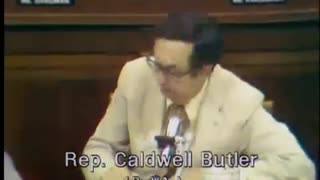 8:57:26
8:57:26
The Memory Hole
6 months agoNixon Impeachment Hearings Day 7 (1974-07-30)
1.23K1 -
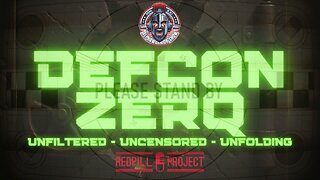 2:19:32
2:19:32
Badlands Media
1 day agoDEFCON ZERO Ep. 005: False Flags, Cyber Fronts & Global Power Plays
146K58 -
 2:35:23
2:35:23
FreshandFit
8 hours agoWhy Black Men Don't Date Black Women Debate
38.6K36 -
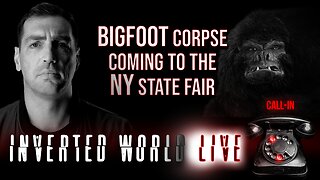 2:03:42
2:03:42
Inverted World Live
11 hours agoBigfoot Corpse Coming to the NY State Fair | Ep. 94
108K26 -
 6:16:23
6:16:23
SpartakusLIVE
12 hours ago$1,000 Pistol Challenge || #1 ENTERTAINER of The EONS Eradicates BOREDOM
85.1K2 -
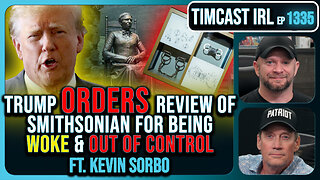 2:33:37
2:33:37
TimcastIRL
10 hours agoTrump Orders Review of Smithsonian For Being Woke & Out of Control | Timcast IRL
188K78 -
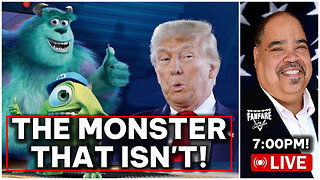 3:09:10
3:09:10
Barry Cunningham
13 hours agoPRESIDENT TRUMP HAS TAKEN THE MONSTER AWAY FROM THE LEFT! HORROR STORIES WON'T WORK ANYMORE!
84.2K81 -
 1:29:55
1:29:55
WickedVirtue
7 hours agoLate Night Fortnite w/ Friends
52.9K -
 3:34:06
3:34:06
This is the Ray Gaming
8 hours ago $1.54 earnedCould you be? Would you be? Won't you be my RAYBOR? | Rumble Premium Creator
32.3K -
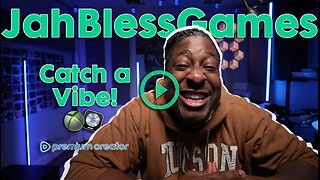 1:46:52
1:46:52
JahBlessGames
9 hours ago🎉Come een' and come tru' - VIBES | MUSIC | GAMES
53.5K2